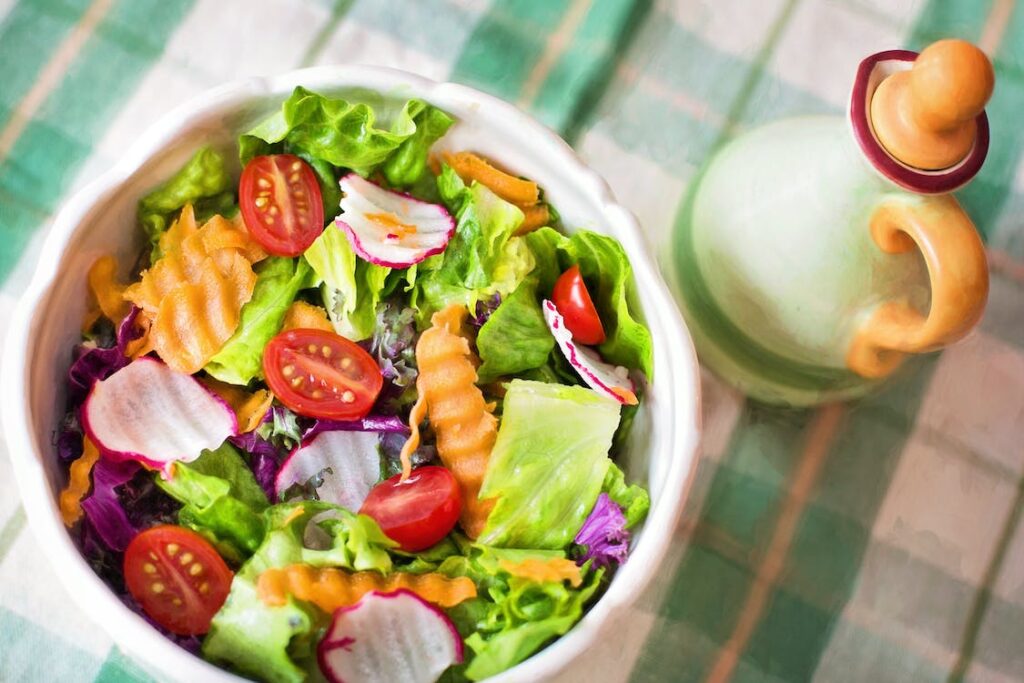Managing blood pressure with the DASH diet
Key points
- The DASH diet can lower your blood pressure, cholesterol and risk of many chronic (long-term) diseases.
- Aim to eat a varied and balanced diet that’s rich in fruit, vegetables, wholegrains and pulses. Include low-fat dairy products, nuts, fish and skinless poultry.
- Limit foods high in salt, saturated fat and sugar, for example salty foods, processed snack foods, fatty meats and sugar-sweetened drinks.
- Talk to your doctor or dietitian before starting the DASH diet to check if it is suitable for you.
What is the DASH diet?
Dietary Approaches to Stop Hypertension, or DASH, is a flexible and balanced diet for people who want to prevent or treat high blood pressure and reduce their risk of heart disease and stroke.
The diet is simple. It promotes foods that are rich in potassium, calcium, magnesium and fibre, which all help control blood pressure. Foods rich in these nutrients include:
- fruits and vegetables
- fat-free or low-fat dairy products
- wholegrains
- skinless poultry and fish
- nuts and pulses (such as lentils, peas, beans).
DASH also includes small amounts of non-tropical vegetable oils like olive oil and rapeseed oil.
The DASH diet limits foods that are high in sodium, total fat, saturated fat and added sugars, for example:
- salt (sodium)
- processed foods high in saturated or trans fats, sugar or salt, like sugary drinks, takeaways and confectionery (pastries, sweets, chocolate)
- fatty, red or processed meat
- fats and oils high in saturated fats, such as butter, coconut oil and palm oil.
DASH diet and salt
The DASH diet limits salt intake to 5-6g of salt per day. For reference, one level teaspoon is about 6g of salt. However, most Irish people eat almost double this, about 9-10g of salt every day.
A lower-salt version of DASH restricts salt to half a teaspoon per day (about 3-4g of salt). You can discuss with your doctor or dietitian which version of the DASH diet best meets your health needs.

What is the difference between the DASH diet and the Mediterranean diet?
The DASH diet and the Mediterranean diet are both examples of heart-healthy diets that help you manage your blood pressure. Both diets are easy to follow, varied and nutritionally balanced. The main difference is that the DASH diet puts a greater focus on reducing your salt intake and including low-fat dairy products.
What are the benefits of the DASH diet?
Studies have shown that the DASH diet can:
- lower your blood pressure by up to 11 millimetres of mercury (mmHg) – starting after only two weeks
- lower your blood cholesterol levels
- help you to manage your weight, which also helps lower your blood pressure
- lower your risk of some cancers, including breast cancer and bowel cancer
- lower your risk of developing metabolic syndrome or type two diabetes.
Because of its focus on vegetables and fruit, wholegrains and legumes, the DASH diet is also a good example of an environmentally sustainable diet.

Is the DASH diet safe?
The DASH diet may not be suitable for everyone. For example, if you have kidney disease DASH may not be safe because of its high levels of potassium from fruit, vegetables and dairy products.
Always talk to your doctor or dietitian if you are thinking about following the DASH diet to make sure it is suitable for your individual situation.
Does the DASH diet have any side effects?
DASH has more servings of fruit, vegetables and wholegrains than you may be used to. Eating more of these high-fibre foods may cause bloating for a short time. To help your body adjust to increased fibre, increase your servings of fruits, vegetables and grains gradually.
Because the DASH diet lowers blood pressure, some people who follow it can experience dizziness. It is very important to continue taking your blood pressure medication while changing your diet. Feeling dizzy may mean that your blood pressure medication needs to be adjusted to reflect the improvements you have made to your diet.
DASH diet recommended servings
The DASH diet is easy to follow and packed with a variety of tasty and nutritious foods.
It provides daily and weekly goals for the number of servings from each food group. This depends on your daily energy (calorie) needs. Here’s an example of the recommended servings from each food group for an average 2,000-calorie-a-day DASH diet.

- Wholegrains: 6 to 8 servings a day. One serving is 1 slice of bread, 1 cup ready-to-eat cereal or half a cup of cooked cereal, rice or pasta.
- Vegetables: 4 to 5 servings a day. One serving is roughly the size of your fist, for example, half a cup of cooked vegetables, 1 handful of salad or 1 bowl (200ml) of vegetable soup.
- Fruits: 4 to 5 servings a day. One serving is roughly the size of your fist, for example, 1 medium fruit like an apple, 2 small fruits like plums, 1 handful of berries or 150ml fruit juice.
- Fat-free or low-fat dairy products: 2 to 3 servings a day. One serving is 1 glass (200ml) of milk, 1 carton (125g) of yogurt or 25g of cheese (size of two thumbs).
–TIP–
If you do not eat dairy products, make sure you get enough calcium from calcium-rich plant foods like green leafy vegetables, calcium-fortified plant-based foods (dairy alternatives, breads and breakfast cereals), peas, beans, lentils, nuts, seeds and soya foods (edamame, tofu and tempeh).
- Lean meats, poultry and fish: no more than 2 servings a day. One serving is 50-75g cooked meat or poultry (half size of palm of hand), 100g cooked fish or 1 egg.
- Nuts, seeds and legumes: 4 to 5 servings a week. One serving is a handful (40g) of unsalted nuts or seeds or ½ cup of cooked beans or lentils.
- Fats and oils: 2 to 3 servings a day. One serving is 1 teaspoon of oil or one portion pack of spread.
- Sweets and added sugars: 5 servings or fewer a week. Limit as much as you can.
- Salt: By eating the low-salt foods at the centre of the DASH diet, you will likely lower your salt intake.
Other ways to manage your blood pressure



